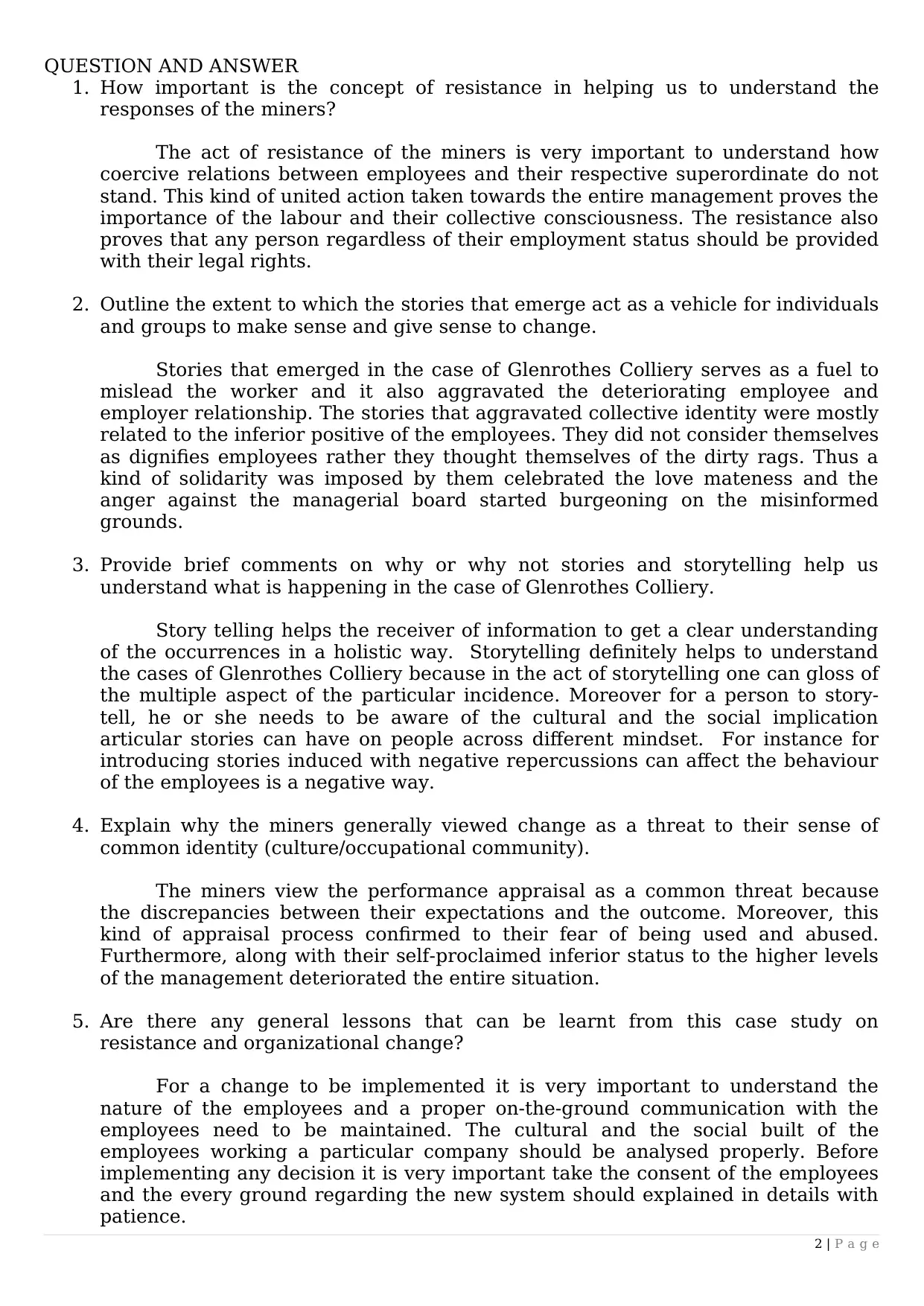Case Study Analysis: Resistance to Change at Glenrothes Colliery
VerifiedAdded on 2023/04/10
|2
|497
|267
Case Study
AI Summary
This case study solution delves into the resistance to organizational change at Glenrothes Colliery, an Australian coal mine. The analysis highlights the miners' reactions to a new performance appraisal system implemented by the chief executive officer without prior consultation. The miners viewed the change as a threat to their common identity and occupational community, fueled by stories that emerged and aggravated the deteriorating employee-employer relationship. The solution underscores the importance of understanding employee sentiments, maintaining open communication, and considering cultural and social contexts before implementing organizational changes. It emphasizes that successful change management requires employee consent and detailed explanations of new systems to avoid resistance and foster a more positive work environment. Desklib provides this solution as part of its extensive library of solved assignments and case studies.
1 out of 2


![[object Object]](/_next/static/media/star-bottom.7253800d.svg)